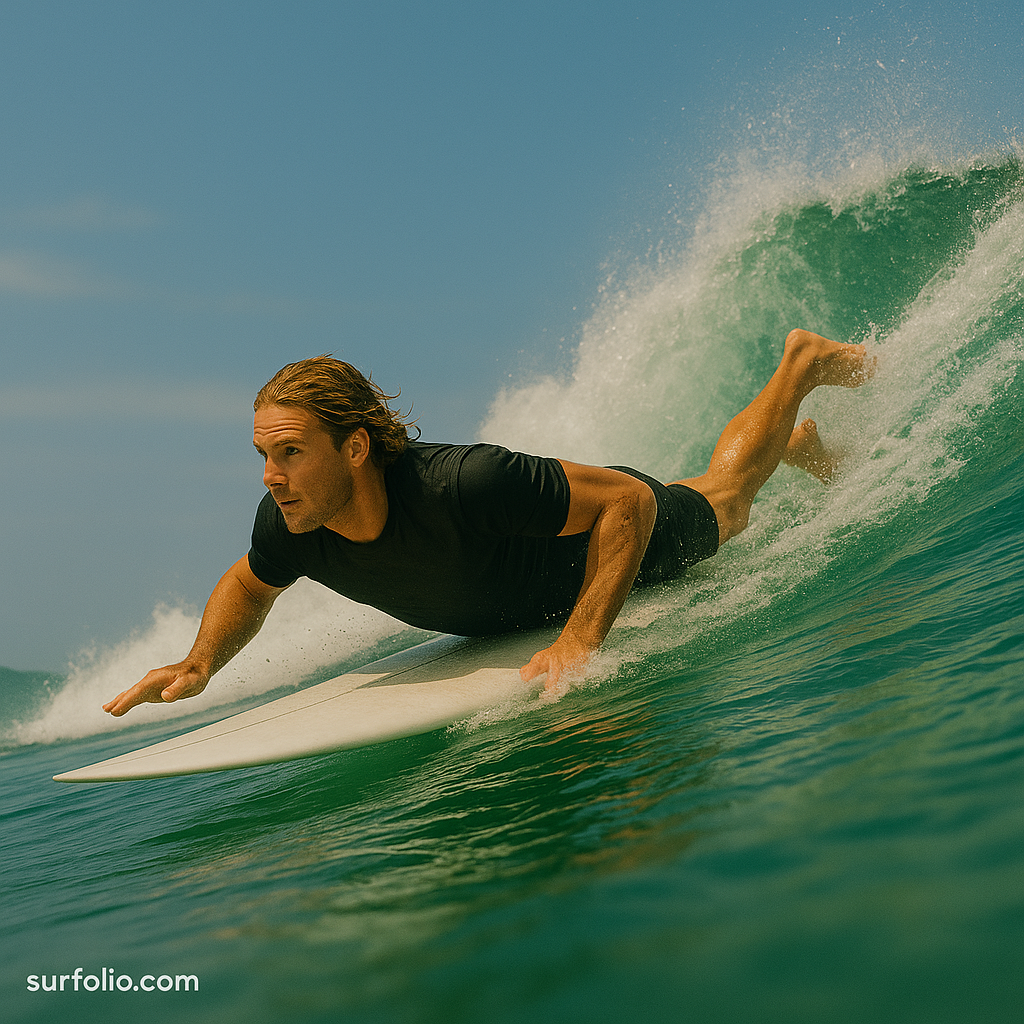
One of the most important steps in progressing as a surfer is learning how to angle your takeoff. Instead of going straight down the face of the wave and losing speed—or worse, nosediving—angling your takeoff helps you flow along the wave’s natural direction. It’s the difference between getting stuck in whitewater and gliding down the line with control and style.
Why Angling Your Takeoff Matters
When you take off straight, you risk outrunning the wave or wiping out as the lip crashes behind you. Angling your board slightly down the line during takeoff sets you up for a smoother ride and keeps you in the power zone. It allows you to maintain speed, stay ahead of the breaking section, and line up for your first bottom turn.
Step 1: Read the Wave
Before paddling, take a moment to observe the wave. Notice which direction it’s breaking—right or left—and position yourself accordingly. Always aim to angle toward the open face, not the whitewater.
If the wave is peeling right (from your perspective facing the beach), your board should point slightly to the right. For a left-hand wave, angle slightly left. This small adjustment before takeoff makes all the difference.
Step 2: Adjust During Paddling
As you paddle in, start to subtly angle your board in the same direction the wave is breaking. Don’t overdo it—just a slight angle of 10–20 degrees is enough. This early positioning helps your takeoff follow the natural path of the wave.
Keep your strokes strong and centered, and look over your shoulder toward the shoulder of the wave (the open, unbroken part). This will naturally guide your body in the right direction.
Step 3: Controlled Pop-Up
When you feel the wave lift your board, commit. Pop up quickly and smoothly, keeping your weight slightly forward to maintain speed. Your board should already be angled toward the open face, allowing you to move down the line with momentum.
As you stand, shift your gaze in the direction you want to go—your body will follow. Keep your knees bent, your center of gravity low, and your shoulders aligned with your board.
Step 4: Find the Sweet Spot
Once you’re up, stay near the wave’s pocket where the power is. This is where you’ll generate the most speed and control. Angling your takeoff helps you get there faster and sets up the next maneuver, whether it’s a bottom turn or a trim.
Common Mistakes
- Going too straight: Leads to nosedives or wipeouts.
- Angling too much: Can cause you to miss the wave completely.
- Looking down: Always look down the line, not at your feet.
Practice Makes Perfect
Try angling your takeoff in small, clean waves before taking it to bigger conditions. The more comfortable you become with the feel of your board turning slightly as you pop up, the easier it will be to flow with the wave instead of fighting it.
Final Thoughts
Mastering your angled takeoff is one of the biggest milestones in surfing progression. It’s all about timing, positioning, and confidence. With practice, you’ll find that perfect line where speed, control, and style meet—turning every drop-in into a smooth, connected ride.
